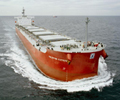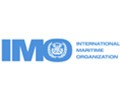Dutch and US groups show interest in Philippine shipyard rescue

The Philippines’ largest shipyard, which collapsed in January with $1.3 billion in debt, has attracted interest from Dutch and U.S. shipbuilders, amid political opposition to a Chinese takeover.
Netherlands-based Damen Group, one of Europe’s biggest family-owned shipbuilders, and an unnamed U.S. shipbuilder are in talks with the Philippine unit of South Korea’s Hanjin Heavy Industries and Construction and its creditors about a variety of options to keep the yard going. Rosario Bernaldo, the new receiver overseeing HHIC-Phil’s corporate rehabilitation, said both shipbuilders were conducting due diligence on the yard.
“They are also negotiating with creditors,” she said.
Damen, which operates 36 shipbuilding and repair yards around the world, said a team had visited the shipyard this week. It was interested in cooperation with the Subic Bay facility. This did not have to include a takeover, said Damen spokesperson Harriet Slager. However, she added, “It doesn’t mean we are not exploring any form of cooperation with the yard.”
The latest development raises hopes for a rescue of the shipyard and could allay concerns from the Philippine defense establishment about a Chinese company gaining access to the facility in Subic Bay. Subic Bay is the site of a former U.S. naval base that opens to the South China Sea, where Beijing has been flexing its military muscles.
HHIC-Phil filed for corporate rehabilitation in January after failing to pay $412 million in debts owed to five local banks and $900 million more to South Korean lenders in what is believed to be the Philippines’ largest-ever corporate default. The company has laid off around 10,000 people over the last three months, leaving it with a few hundred staff to finish remaining work.
Damen is based in the Dutch town of Gorinchem, near Rotterdam. Founded in 1927, the company employs 12,000 people worldwide and generated revenue of 2 billion euros ($2.27 billion) in 2018. It manufactures a wide array of ships from tugboats to freighters and warships. Damen has facilities in the Asia-Pacific region, including Australia, China, Indonesia, Singapore and Vietnam. A senior executive told Jane’s last year that the company wanted to establish a presence in the Philippines by partnering with local shipyards.
One of Hanjin’s Philippine lenders confirmed that the banks are in in talks with foreign shipbuilders but declined to give details. Asked how soon they could strike a deal, Jomi Deveras, Rizal Commercial Banking’s senior vice president, said, “It depends on the speed of their due diligence.”
Hanjin and its creditors are drawing up a new rehabilitation plan, following the resignation of Stefani Sano as receiver in early February due to disagreements with the lenders.
Bernaldo, who was nominated by the banks, favors bringing in a shipbuilder for the rescue amid reports that companies outside the industry are also interested in buying HHIC-Phil assets. The company is based in an area that offers special tax breaks.
“It’s better if [an acquirer] buys it lock, stock and barrel.” Bernaldo said. “That’s the ideal, [to] pay all creditors and continue with the operations of shipbuilding and ship repair.”
Philippine officials estimate the value Hanjin’s business at about $1.2 billion to $1.3 billion, but some analysts say this is generous.
Two Chinese shipbuilders in January expressed interest in the company, according to Philippine Trade Undersecretary Ceferino Rodolfo. But a senator and a retired navy officer quickly sounded the alarm, warning that Chinese ownership of the site would pose a threat to national security. Manila and Beijing are still locked in a territorial dispute in the South China Sea, despite recent moves by Philippine President Rodrigo Duterte to cooperate on projects such as energy exploration.
Duterte is also considering a state-backed rescue of Hanjin, in which the government could take a minority stake, Defense Secretary Delfin Lorenzana told the Senate in January. But Finance Secretary Carlos Dominguez, the head of Duterte’s economic team, said he would wait for the private sector to reach an agreement.
Hanjin has invested some $2.3 billion in the Subic economic zone since it set up the shipyard in 2006. Under Hanjin’s ownership, the shipyard had built 123 vessels by 2018, including oil tankers and merchant ships, making the Philippines one of the top shipbuilding nations in the world. But slower demand and delays in payments from buyers squeezed HHIC-Phil’s cash flow.
Source: Nikkei Asian Review

 Hellenic Shipping News Worldwide Hellenic Shipping News Worldwide, Online Daily Newspaper on Hellenic and International Shipping
Hellenic Shipping News Worldwide Hellenic Shipping News Worldwide, Online Daily Newspaper on Hellenic and International Shipping






















 PG-Software
PG-Software